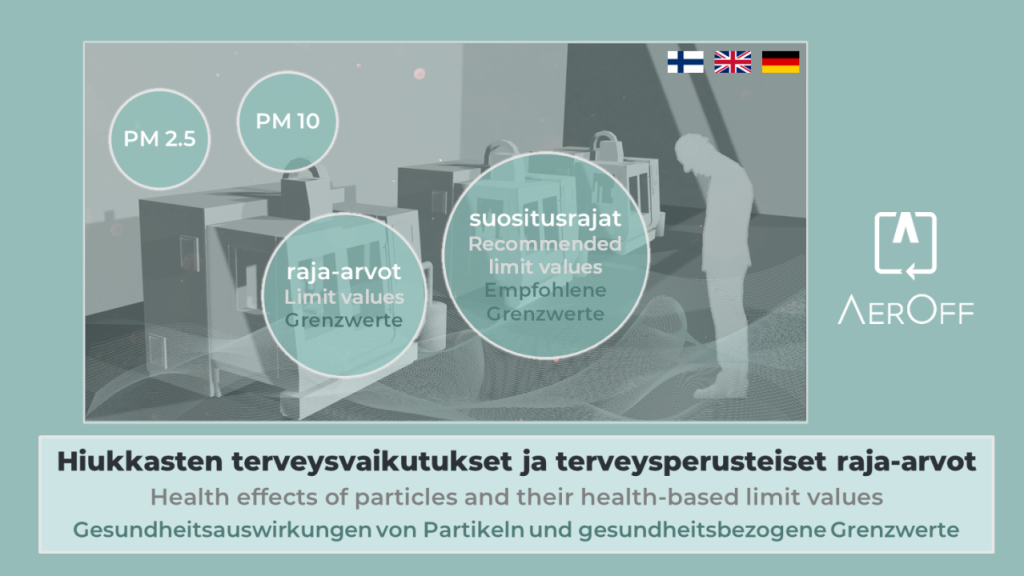
Outdoor air quality and its effects on health have been studied for a long time and health-based limit values for PM 2.5 and PM 10 have been set. In particular, PM 2.5 concentrations correlate statistically best with premature deaths. PM 2.5 are fine particles with a diameter of less than 2.5 micrometres.
Several studies show that PM 2.5 causes more premature deaths than all other air pollutants combined. In addition, particulate matter causes a variety of diseases, including shortness of breath, asthma, inflammation, cancer, circulatory disorders and neurological diseases. The dangerous nature of PM 2.5 emissions is shown by the EU reporting that PM 2.5 caused more than 400 000 premature deaths in the 28 EU countries in 2012 [1].
There are fewer studies on indoor air as there are only few systematic long-term measurements, but the consensus among researchers is that the health effects of PM are similar in outdoor and indoor air. The official limit values for PM 2.5 and PM 10 apply mainly to outdoor air and do themselves oblige employers to comply with them in indoor environments. However, they can be used as indicators for indoor air quality analysis and health risk mapping.
There are several recommended limits for PM 2.5 and PM 10. The WHO recommends 24-hour exposure limits for PM 2.5 and PM 10 of 15 µg/m³ and 45 µg/m³ respectively. In Finland, the 24-hour exposure limits set with STM 545/2015 are 25 µg/m³ (PM 2.5) and 50 µg/m³ (PM 10). The 24-hour limits are not fully comparable to an 8-hour working day exposure, but they give an indication of safe levels.
Finland has also set an indoor air quality classification to be used to help build healthier and more comfortable buildings:
- Class S1 represents the best indoor air quality (PM 2.5 limit value of 10 µg/m³),
- S2 represents good air quality (10 µg/m³), and
- S3 represents satisfactory air quality (25 µg/m³).
The PM 2.5 mass concentration also includes all smaller particles. This includes nanoparticles below 100 nm which have also been shown to have various health effects. The Finnish Ministry of Social Affairs and Health has recently published a report on industrial nanoparticles and their effects. These measurements also report on particle number (PN) and PM 1 mass concentrations, with more emphasis on the role of smaller particles. For PM 1, standards exist, e.g. for ventilation filters. For PN, a standard for outdoor air quality is under preparation.
PM 2.5 is the most studied and one of the most important indicators of the health effects of particulate matter. The official Finnish limit value of 25 µg/m³ gives an indication of the health safety of exposure.
[1] European Environment Agency: Premature deaths attributable to air pollution. (https://www.eea.europa.eu/media/newsreleases/many-europeans-still-exposed-to-air-pollution-2015/premature-deaths-attributable-to-air-pollution)
